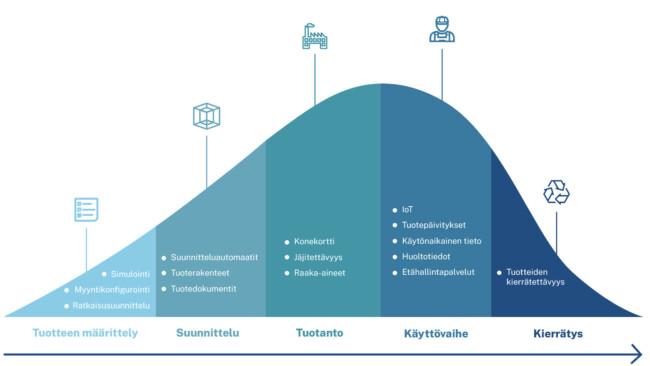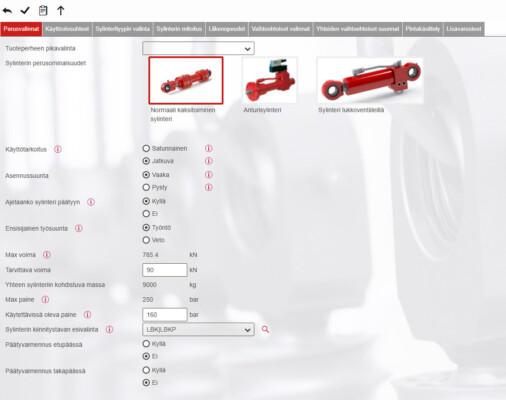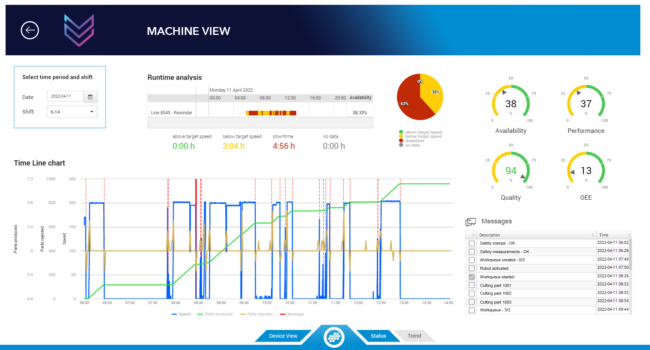
Software is reshaping the operation and life cycle of industrial products
- iot-ticket
- Summium
In many products designed for consumer use, the physical product and related services form an integrated whole where the services cannot be separated from the product itself. Most of the features of mobile phones are implemented through applications, which are in fact services provided over the network. We are used to this as consumers, using various home automation systems, sports watches and, increasingly, services integrated into cars.
B2B and manufacturing industries are learning from consumer products. New intelligent production and supply chain solutions combine product design and operation into a single entity. Products are intelligent, they can be upgraded over the network, features can be developed during operation, instructions can be given to the end user, or preventive maintenance can be carried out.
Building such industrial product-service bundles is usually not possible with a single data system, as a seamless user experience requires a connection to several different data systems, whose data can be combined into a view for the user of the device.

From product definition to production
The first step for industrial products is the documentation of the product’s technical data based on customer needs, i.e. a machine card or the product’s birth certificate. Product configurators, or Configure Price Quote (CPQ) systems, allow users to build their own product configurations, either by themselves or in cooperation with sales/design. CPQ systems provide information on customer preferences for production and instructions on making the product for the supply chain. This machine card also serves as the basis for product history over the life cycle. Maintenance, spare part replacements, inspections and approvals are all linked to a specific product serial number generated by the system.

Runtime data can be collected in a variety of ways for the product history. Operational data such as various settings and hours driven can be recorded during scheduled maintenance or regular inspections. However, smart products also have the potential for self-diagnostics and adaptive behaviour. If the device is connected to the network, operational data can be transferred to a centralised cloud.
Product use stage
The Internet of Things (IoT) provides a way to manage a large number of devices in a secure manner. Centralised data collection enables the use of runtime data. Devices and users must be identified, and the data they send must be archived and processed. The system must generate events and alerts based on the data and ensure up-to-date presentation of data to the right user groups. IoT platforms address these issues and today often operate as centralised cloud solutions hosted by manufacturers.

From applications to business
Actual business processes such as automated maintenance calls, tracking fleet usage or managing equipment access require the integration of many other systems in addition to CPQ and IoT. Enterprise Resource Planning (ERP), Product Data Management (PDM/PLM), Customer Relationship Management (CRM) and Condition Based Maintenance (CBM) systems must be integrated to implement, for example, automatic ordering of spare parts by the device itself. In practice, large-scale projects use data architecture design, various integration tools, and sometimes hyper-automation to implement timely data transfer between systems.
Customised software development is key to providing users with adaptable processes and user-friendly interfaces. However, the foundation lies in a well-designed system architecture and well-chosen components for product data management and IoT connectivity.
Video: Internet of things can be also be combined with CPQ sales tools for smarter automation. Watch how.
Author

Wapice Ltd.

